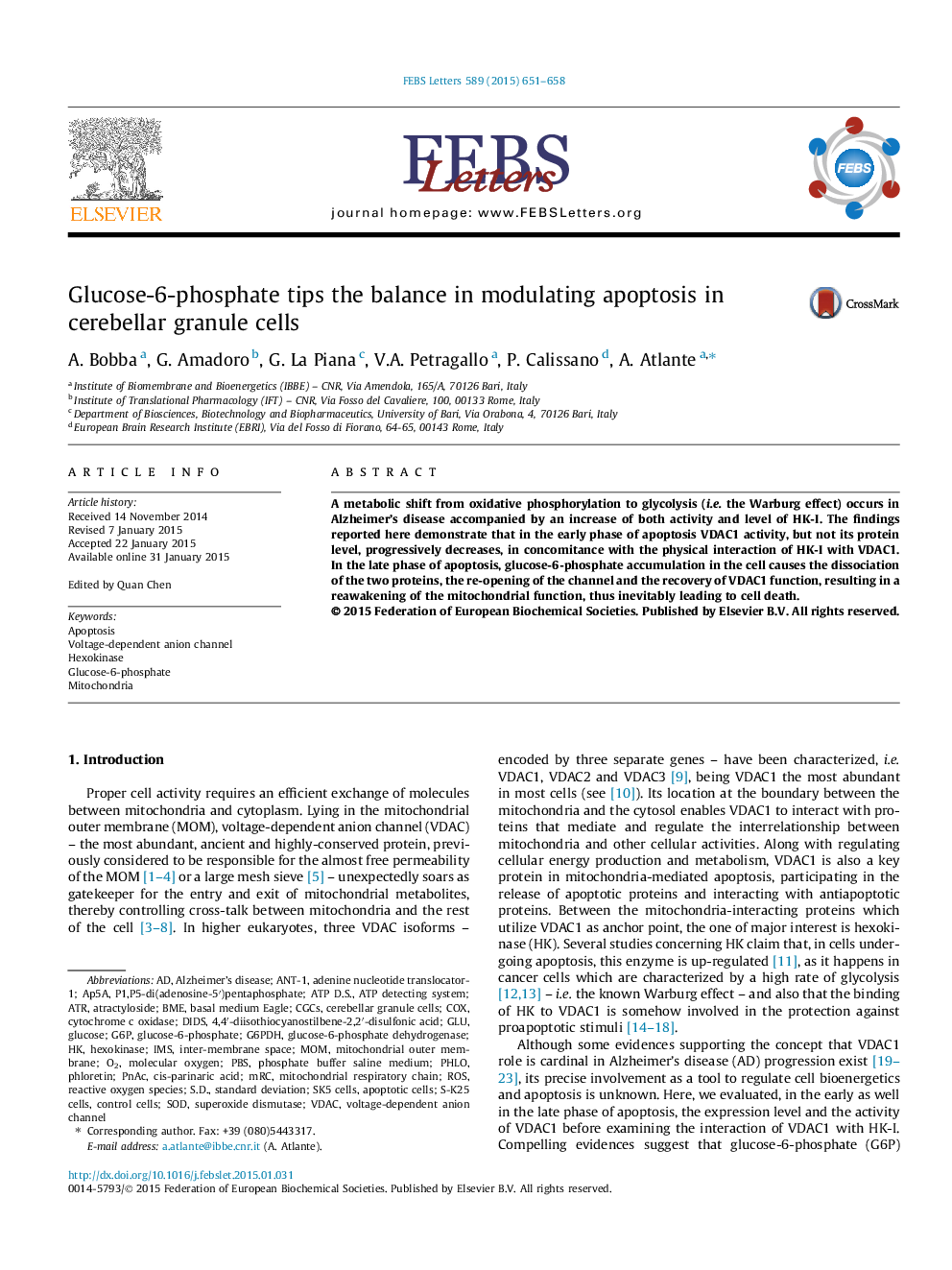| Article ID | Journal | Published Year | Pages | File Type |
|---|---|---|---|---|
| 10870293 | FEBS Letters | 2015 | 8 Pages |
Abstract
A metabolic shift from oxidative phosphorylation to glycolysis (i.e. the Warburg effect) occurs in Alzheimer's disease accompanied by an increase of both activity and level of HK-I. The findings reported here demonstrate that in the early phase of apoptosis VDAC1 activity, but not its protein level, progressively decreases, in concomitance with the physical interaction of HK-I with VDAC1. In the late phase of apoptosis, glucose-6-phosphate accumulation in the cell causes the dissociation of the two proteins, the re-opening of the channel and the recovery of VDAC1 function, resulting in a reawakening of the mitochondrial function, thus inevitably leading to cell death.
Keywords
ANT-1BMECGCsDIDSG6PMRCG6PDHAp5APNACIMSATP D.S.ATRATP detecting systemCOXphosphate buffer saline mediumPBSP1,P5-Di(Adenosine-5′)Pentaphosphate4,4′-Diisothiocyanostilbene-2,2′-disulfonic acidROSS.D.atractylosidecis-parinaric acidstandard deviationMolecular oxygenAlzheimer’s diseaseMitochondrial respiratory chaincerebellar granule cellscytochrome c oxidasebasal medium Eaglemitochondrial outer membranePhloretinMoMhexokinaseGluGlucoseglucose-6-phosphateglucose-6-phosphate dehydrogenaseReactive oxygen species
Related Topics
Life Sciences
Agricultural and Biological Sciences
Plant Science
Authors
A. Bobba, G. Amadoro, G. La Piana, V.A. Petragallo, P. Calissano, A. Atlante,
